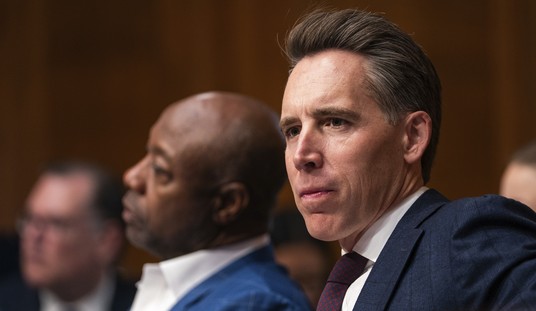Whether or not the “good old days” ever existed is a matter for debate. An Associated Press article summarizing declassified US Army documents describes the summary execution of thousands of Korean communists during the Korean War.
Extensive archival research by The Associated Press has found no indication Far East commander Gen. Douglas MacArthur took action to stem the summary mass killing, knowledge of which reached top levels of the Pentagon and State Department in Washington, where it was classified “secret” and filed away. Now, a half-century later, the South Korean government’s Truth and Reconciliation Commission is investigating what happened in that summer of terror, a political bloodbath largely hidden from history, unlike the communist invaders’ executions of southern rightists, which were widely publicized and denounced at the time. …
“The most important thing is that they did not stop the executions,” historian Jung Byung-joon, a member of the 2-year-old commission, said of the Americans. “They were at the crime scene, and took pictures and wrote reports.”
They took pictures in July 1950 at the slaughter of dozens of men at one huge killing field outside the central city of Daejeon. Between 3,000 and 7,000 South Koreans are believed to have been shot there by their own military and police, and dumped into mass graves, said Kim Dong-choon, the commission member overseeing the investigation of these government killings.
In July, 1950, the bulk of US forces had not yet arrived in the Korean peninsula. Task Force Smith, which had been constituted from troops taken from occupation duty in Japan had just been annihilated by the North Koreans. The military context of the South Korean mass killings was this:
The first significant foreign military intervention was the American Task Force Smith, part of the U.S. Army’s 24th Infantry Division based in Japan. On July 5, it fought for the first time at Osan and was defeated with heavy losses. The victorious North Korean forces advanced southwards, and the half-strength 24th Division was forced to retreat to Taejeon, which also fell to the Northern forces. Major General William F. Dean, commander of the division, was taken prisoner.
By August, the South Korean forces and the U.S. Eighth Army under General Walton Walker had been driven back into a small area in the southeast corner of the Korean peninsula around the city of Pusan. As the North Koreans advanced, they rounded up and killed civil servants. On August 20, MacArthur sent a message warning Kim Il Sung that he would be held responsible for further atrocities committed against UN troops.
By September, only the area around Pusan — about 10 percent of the Korean peninsula — was still in coalition hands. With the aid of massive American supplies, air support, and additional reinforcements, the UN forces managed to stabilize a line along the Nakdong River. This desperate holding action became known in the United States as the Pusan Perimeter.
As these battlefield events were taking place, the South Koreans were rounding up and killing every Communist sympathizer they could find. The AP article continues:
On June 29, 1950, as the southern army and its U.S. advisers retreated southward, reports from Seoul said the conquering northerners had emptied the southern capital’s prisons, and ex-inmates were reinforcing the new occupation regime. In a confidential narrative he later wrote for Army historians, Lt. Col. Rollins S. Emmerich, a senior U.S. adviser, described what then happened in the southern port city of Busan, formerly known as Pusan. Emmerich was told by a subordinate that a South Korean regimental commander, determined to keep Busan’s political prisoners from joining the enemy, planned “to execute some 3500 suspected peace time Communists, locked up in the local prison,” according to the declassified 78-page narrative, first uncovered by the newspaper Busan Ilbo at the U.S. National Archives.
While the AP article doesn’t provide the military context and darkly describes the pre-war Korean ‘right wing campaign of oppression’ against the Korean Labor Party, the events described were certainly crimes and for that reason their existence was suppressed. The closest the AP article comes to describing the desperate situation is to say that “as that summer wore on, and the invaders pressed their attack on the southern zone, Busan-area prisoners were shot by the hundreds, Korean and foreign witnesses later said.” No such excuse of course can be put forward to explain the 11,000 summary executions that is the “partial accounting” of the purges conducted by the French resistance in the immediate aftermath of the Liberation.
Wars provide a unique opportunity for evening scores. Even in civilized Europe; or perhaps especially so. Before Germany had surrendered the French had tried an executed Robert Brasillach, a homosexual French author who had collaborated with the Nazis. His execution divided the French intellectual establishment of the time. Here was a well-known French author going to his death, not for acts he had committed but for words he had written. Kim Koster wrote of the controversy:
To many Frenchmen at the time, however, Brasillach was a hated symbol of collaboration and oppression. After his conviction, a group of French writers circulated a petition calling upon French president Charles de Gaulle to show mercy and prevent the execution. Despite the free-speech issues involved, many writers refused to sign. Jean-Paul Sartre, for instance, “didn’t sign and never explicitly explained why,” Kaplan writes, “but he referred in much of his writing of the period to the responsibility of the writer and to the idea that a writer must be prepared to die for what he puts on paper.” Simone de Beauvoir also refused to sign, and her reflections eighteen years later came to the point: “There are words as murderous as gas chambers.É In the case of Brasillach, there was no question of a mere ‘offense of opinion’; his denunciations, his advocacy of murder and genocide constituted a direct collaboration with the Gestapo.”
Albert Camus did sign the clemency petition, but as Kaplan shows in a letter he wrote to a friend, it was solely because he abhorred the death penalty. “It is not for the writer, whom I consider of no significance,” Camus wrote. “Nor for the individual, whom I disdain with all my might. If I had even been tempted to be interested in him, the memory of two or three of my friends who were mutilated or gunned down by Brasillach’s friends while his newspaper encouraged them to do it would have prevented me.”
Even the immortals of the French pantheon were not beyond revenge. War is a hard thing for those who have grown up in peace to understand. The saying “what goes on in Vegas stays in Vegas” goes double for wartime. I’ve written elsewhere that what really distinguishes veteran’s reunions isn’t the stories they tell but the secrets they keep. That goes for both the good and the bad. Were the Korean killings a crime? They very probably were. And why are they being declassified now? Because everyone involved is either dead or too old to be held to account. That leads us back to the first sentence: did the good old days ever exist? How does one weigh the act of cold blooded murder against the backdrop of the of the armies of Kim Il Sung bearing down on your position? Pray that you never find out. There are situations in which there are no good solutions.










Join the conversation as a VIP Member